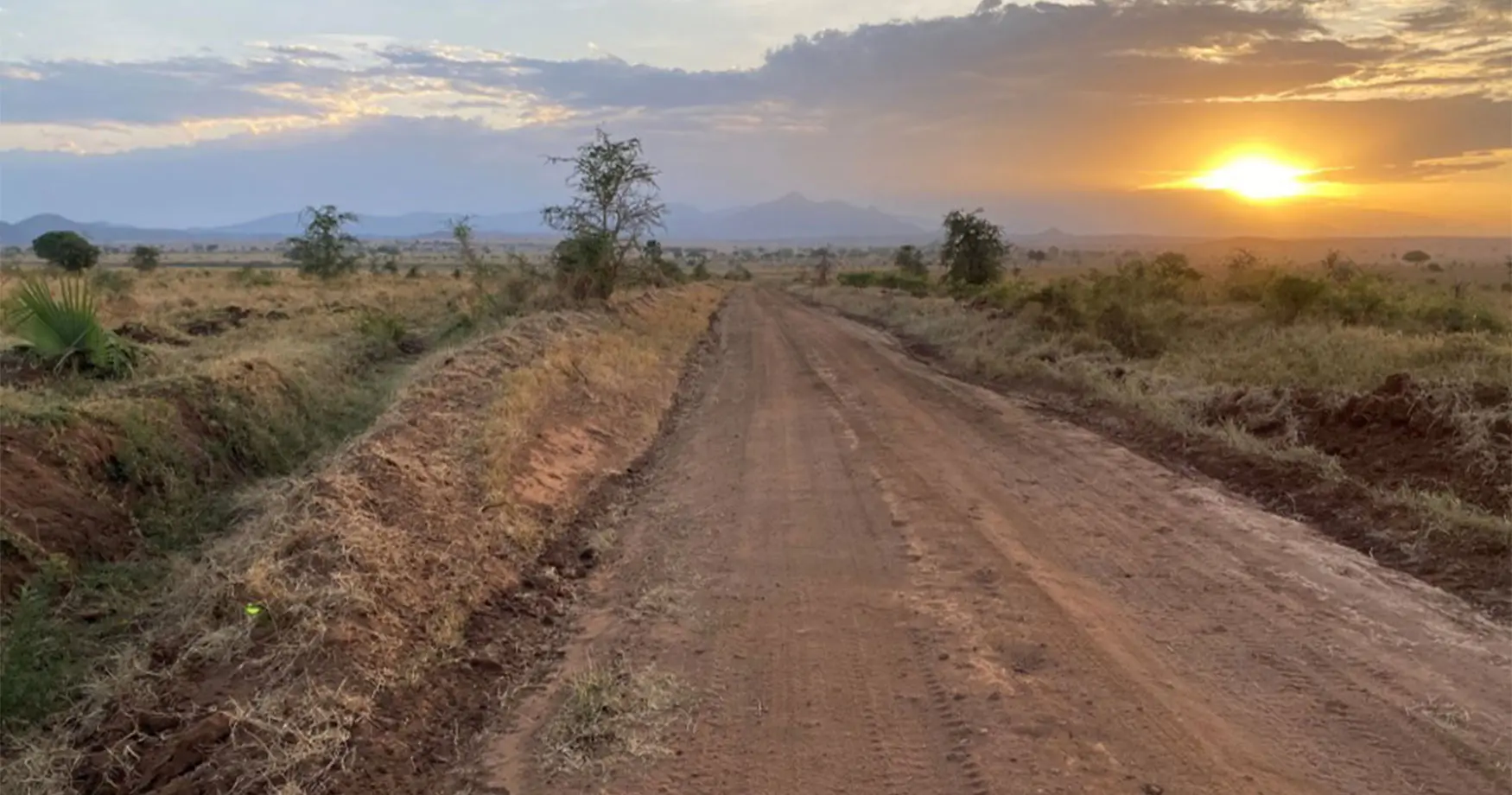Policies
What Ugandans Need to Know About E-Waste
Beyond health concerns, e-waste severely impacts Uganda’s environment.

As Uganda moves towards becoming a digital hub in Africa, a significant challenge has emerged: electronic waste, or e-waste. This includes discarded items such as old smartphones, laptops, refrigerators, and solar panels, which are accumulating at an alarming rate. This e-waste poses risks to the environment, public health, and economic development. However, with the right knowledge and proactive measures, Ugandans can turn this challenge into an opportunity for a cleaner, greener, and more prosperous future. Based on the government’s efforts through the Ministry of ICT and National Guidance, here’s what every Ugandan should know about e-waste and how to address it.
E-waste consists of discarded electrical or electronic devices, such as mobile phones, computers, televisions, batteries, and household appliances that are broken, outdated, or no longer in use. These items contain valuable materials like gold and copper, and plastics, but they also include hazardous substances like lead, mercury, and cadmium, which can cause serious harm if not handled properly. In Uganda, the rapid adoption of mobile phones, over 70% of the population owns one, combined with e-governance initiatives and solar energy systems, is contributing to the growth of e-waste. In 2019, Uganda generated 32,000 tons of e-waste, but only a tiny fraction of 0.18 tons was formally recycled, leaving most to be processed unsafely or disposed of in landfills.
E-waste is not just an eyesore; it is a critical issue with significant implications for health, the environment, and the economy. Improper disposal of e-waste can release toxic substances that pose serious health risks. For instance, lead from old computer monitors can harm the brain and kidneys, while mercury from fluorescent bulbs can affect unborn babies and lead to neurological disorders. The burning of e-waste plastics, a common practice in informal recycling, releases dioxins that are linked to cancer. Informal recyclers in areas like Kampala’s Kiteezi landfill or Katwe face the highest risks, working without protective gear, while nearby communities suffer from contaminated air and water. A 2020 study in Kampala revealed elevated lead levels in the blood of informal workers, highlighting the urgency of this issue.
Beyond health concerns, e-waste severely impacts Uganda’s environment. Landfills can leak heavy metals into the soil, affecting crops and livestock, while battery chemicals contaminate rivers and lakes, including Lake Victoria, jeopardizing fish populations and drinking water quality. The burning of e-waste emits toxic fumes, deteriorating air quality and contributing to climate change. Without proper management, Uganda’s landscapes and biodiversity may face irreversible damage, undermining the nation’s sustainability goals.
Conversely, e-waste presents significant economic opportunities. It is a source of valuable materials that can be recovered. For instance, recycling a ton of mobile phones can yield 300 grams of gold, worth thousands of dollars, along with reusable copper and plastics for manufacturing. By effectively managing e-waste, Uganda can create green jobs in recycling, repair, and research, particularly for its youthful population, where 78% are under 35. The government’s plans for e-waste facilities aim to harness this potential, promoting a circular economy in which waste is seen as a resource.
Uganda’s digital transformation is impressive, with 33 million mobile subscriptions and a 31% internet penetration rate by 2023. However, this progress has led to an increase in e-waste. The United Nations’ 2024 Global E-Waste Monitor warns that e-waste is growing five times faster than global recycling capacity, and Uganda is facing similar challenges. The country’s sole formal e-waste facility in Kampala, operational since 2021, cannot manage the 32,000 tons of e-waste generated annually. Most e-waste is processed informally, using unsafe methods like burning or acid leaching, posing dangers to both workers and the environment.
Public awareness about e-waste remains low; a 2021 study in Kampala found that 80% of residents did not know how to safely dispose of e-waste or understand its risks, often mixing electronic items with regular household waste. Additionally, Uganda faces challenges from imported e-waste, as second-hand electronics and illegal shipments from developed countries contribute to the waste burden, quickly becoming outdated. The prevalence of informal recyclers who lack training and protective equipment further complicates the issue, as their unsafe practices prioritize short-term profits over long-term health and environmental safety.
The Ugandan government, led by the Ministry of ICT and National Guidance, is taking decisive action to address the issue of electronic waste (e-waste). Since 2012, Uganda has established a strong policy framework, beginning with the E-Waste Management Policy, followed by 2016 guidelines that banned harmful practices such as open burning and unregulated dumping. The 2020 National Environment Regulations further strengthened these efforts by requiring licensed facilities for e-waste disposal and enforcing accountability measures. A key initiative, known as Extended Producer Responsibility (EPR), mandates that companies producing or importing electronics manage the disposal of their products at the end of their life cycle. Recent regulations announced in 2025 ensure strict enforcement, requiring compliance by licensed handlers.
Infrastructure development is also a priority. The Kampala e-waste facility, launched in 2021, is designed to collect, sort, and recycle e-waste, thus reducing environmental harm and creating jobs. There are plans for regional centers in Gulu, Mbarara, and Mbale to make recycling accessible across the country. In December 2024, the government announced negotiations with the World Bank to fund a modern, centralized facility capable of handling complex waste such as batteries and solar panels, demonstrating a commitment to scaling up solutions.
Community-driven initiatives are gaining momentum. In the Bidibidi Refugee Settlement, a pilot project repaired over 3,400 solar lanterns by 2023, generating jobs and reducing waste. This model has the potential to be expanded to other electronics. Public-private partnerships with companies and NGOs, such as the Global Green Growth Institute, are supporting sustainable recycling and job creation. A stakeholder workshop held in April 2025 at the Sheraton Kampala validated a national e-waste study, bringing together government, businesses, and communities to refine strategies. Upcoming public awareness campaigns will utilize radio, social media, and community events to educate Ugandans on safe disposal practices, addressing the existing awareness gap.
Every Ugandan has a role to play in managing e-waste responsibly. Instead of throwing electronics in regular trash or burning them, both of which pollute the environment, you should take old phones, batteries, and appliances to the Kampala e-waste facility or licensed handlers. Contact your local government or the National Environment Management Authority for guidance on collection points. Some manufacturers, under the EPR program, may offer take-back initiatives when you purchase new devices, so be sure to check with retailers.
Education is essential. Learn about the risks associated with e-waste, such as how old batteries can leak toxins into soil used for farming, and share this knowledge with family and neighbors. Stay updated through radio programs or social media campaigns from the Ministry of ICT regarding safe disposal methods. Encourage schools to teach children about e-waste, fostering a culture of sustainability. Supporting recycling and repair initiatives is a practical step as well. Recycle e-waste at formal facilities to recover valuable materials, which in turn boosts Uganda’s economy. Before discarding devices, consider repairing them, as seen in the Bidibidi project, which extends the lifespan of devices and saves money. When purchasing electronics, opt for durable, repairable products from brands with established recycling programs.
Advocacy can help amplify your impact. Urge local leaders to establish e-waste collection points, especially in rural areas, and support policies like EPR by choosing to buy from compliant companies. Join community initiatives or engage with NGOs partnered with organizations like UNDP or IOM to contribute to e-waste solutions. These actions, large or small, can make a significant difference.
E-waste is not only a challenge; it also presents a significant opportunity for building a sustainable Uganda. As Commissioner Ochero Michael stated, the aim is to ensure that technology benefits the environment while promoting the digital economy and public health. By effectively managing e-waste, Uganda can protect its rivers, soils, and air, safeguarding natural treasures like Lake Victoria. This initiative can also protect communities from toxic exposure, leading to healthier lives. The 32,000 tons of e-waste generated annually could power economic growth; for instance, recycling just 10,000 tons of mobile phones can yield gold worth $200,000 enough to fund schools or clinics. Additionally, green jobs in recycling and repair can empower youth and women, supporting Uganda’s youthful demographic.
Regionally, Uganda has the potential to lead by example, inspiring its East African neighbors, such as Kenya and Rwanda. The establishment of the Kampala facility, the creation of regional centers, and partnerships with the World Bank are steps toward this vision. However, public participation is crucial for success. By transforming e-waste into a valuable resource, Uganda can strengthen its circular economy, reduce reliance on mining, and contribute to global sustainability goals, such as responsible consumption and climate action.
E-waste is a shared responsibility. As Uganda embraces its digital future, it is essential for citizens, businesses, and communities to take action to ensure that technology does not come at the expense of health or the environment. Start today: find a recycling point, repair an old device, or raise awareness about the risks of e-waste. Together, Ugandans can transform e-waste from a growing problem into a cornerstone of a sustainable, prosperous nation. For more information, reach out to the Ministry of ICT and National Guidance, NEMA, or visit the Kampala e-waste facility. Let’s make e-waste a story of opportunity rather than harm.
Business
Uganda’s Kitgum-Kidepo Road Upgrade
Following the reintegration of the Uganda National Roads Authority (UNRA) into the MoWT in 2024, the ministry has taken full responsibility for delivering this vital project.

In a landmark decision, Uganda’s Parliament has authorized the government to secure a loan of €110.5 million (approximately Shs 450 billion) from Standard Chartered Bank. This funding will go towards upgrading the 115.8-kilometer Kitgum-Kidepo Road, a crucial infrastructure project that will connect the Kitgum and Kaabong districts in northern Uganda. The project aims to enhance tourism, improve regional connectivity, and address the socioeconomic challenges faced by the impoverished Karamoja subregion.
The Kitgum-Kidepo Road Project, led by the Ministry of Works and Transport (MoWT), involves rehabilitating an existing gravel road that extends from Kitgum town to the outskirts of Kidepo Valley National Park. Following the reintegration of the Uganda National Roads Authority (UNRA) into the MoWT in 2024, the ministry has taken full responsibility for delivering this vital project. The upgrade will transform the current Class C1 gravel road, which suffers from potholes, ruts, and poor drainage, into a high-quality, paved road. The project also includes widening the carriageway, improving drainage systems, and constructing two bridges to ensure year-round accessibility.
The road’s strategic location makes it crucial for unlocking agricultural productivity in Kitgum and Karenga districts, facilitating trade with South Sudan and Kenya, and promoting tourism by improving access to Kidepo Valley National Park, one of Uganda’s premier wildlife destinations.
On April 30, 2024, during a plenary session presided over by Speaker Anita Among, Hon. Henry Musasizi, the Minister of State for Finance, advocated for the loan’s approval. He emphasized the road’s importance in addressing the Karamoja subregion’s low road density, only 5.9 kilometers of paved roads per 1,000 square kilometers, and its potential to drive economic growth. “This road is critical for tourism and regional development,” he stated, pointing out that poor infrastructure has hindered Uganda’s ability to fully realize its tourism potential.
Despite broad support for the loan, the approval process faced scrutiny. Legislators, including the Leader of the Opposition, Hon. Joel Senyonyi, raised concerns about skipping a report from the House Committee on National Economy and the lack of transparency regarding the loan’s terms, such as interest rates and repayment schedules. Senyonyi warned about the risks of approving loans without thorough vetting, citing past problematic agreements. A motion by Government Chief Whip Hon. Denis Hamson Obua to waive the committee report requirement ultimately prevailed, reflecting Parliament’s commitment to addressing infrastructure deficits. The government has pledged that the loan will align with Uganda’s fiscal sustainability goals, with further details available through the Ministry of Finance.
An Environmental and Social Impact Assessment (ESIA) conducted in June 2024 ensures compliance with national and international standards, including the IFC’s Performance Standards and Equator Principles IV. The project will traverse open woodlands and semi-arid vegetation, avoiding critical habitats but will result in the loss of 14.4 hectares of natural habitat in the Nyangea-Napore Forest Reserve. Mitigation measures will address vegetation clearance, waste management, and dust emissions. The project will impact 59 culturally significant shea butter trees, which are valued for their spiritual, medicinal, and economic importance, as well as archaeological sites, including Iron Age pottery. Mitigation strategies include documentation, selective rerouting where feasible, and community consultations to preserve cultural heritage.
Socioeconomically, the project will benefit 158,549 individuals across the Kitgum and Karenga districts by improving access to markets, schools, and health facilities. Extensive stakeholder engagement, including focus groups with women, youth, and community leaders, has helped shape the project’s design. A grievance redress mechanism will ensure ongoing community feedback and conflict resolution. Challenges such as involuntary resettlement and gender-based violence will be mitigated through cash compensation, livelihood restoration initiatives, and community sensitization, with special attention given to vulnerable groups.
The upgraded Kitgum-Kidepo Road is poised to deliver transformative benefits, including:
- Tourism Boost: Improved access to Kidepo Valley National Park is expected to increase visitor numbers, supporting Uganda’s Vision 2040 goal of promoting tourism and potentially boosting regional tourism revenue.
- Economic Growth: Enhanced connectivity will facilitate domestic and cross-border trade, unlocking agricultural potential and creating hundreds of local jobs during construction, with further economic impact assessments underway.
- Social Impact: Year-round, safe passage will improve access to education, healthcare, and markets while reducing travel times. The upgrade will introduce speed bumps, signage, and pedestrian crossings to address current safety gaps, such as the low helmet usage (17%) among bodaboda cyclists and inadequate road markings.
- Environmental Benefits: A sealed road will reduce dust emissions, improving air quality and public health.
While the project holds immense promise, it faces challenges, including managing construction-related disruptions and ensuring equitable benefits. Mitigation measures include dust suppression, community sensitization on road safety, and adherence to a Resettlement Action Plan to support affected individuals. The road’s climate-resilient design, featuring elevated embankments, stormwater management, and a Climate Risk Monitoring Framework, will mitigate flood risks in a region with bimodal rainfall. The Ministry of Works and Transport (MoWT) will implement a robust monitoring framework to track environmental, social, and economic outcomes, with regular community feedback to ensure accountability.
The approval of the Kitgum-Kidepo Road upgrade marks a pivotal moment for Uganda’s northeastern region. By addressing infrastructure deficiencies, the project aligns with national development goals and sets the stage for economic and social transformation. As implementation progresses, stakeholders must ensure transparent execution and robust mitigation to maximize benefits for communities, businesses, and tourists. A map of the road’s route is available through the MoWT’s project documentation.
This historic investment in Uganda’s infrastructure underscores the government’s dedication to fostering inclusive growth and unlocking the potential of one of its most underserved regions. The Kitgum-Kidepo Road is not just a pathway; it is a gateway to a brighter future.
Policies
President Museveni Signals Labour Reforms, Champions Wealth-Driven Job Creation
President Museveni revealed that the Cabinet will revisit critical labour issues in June 2025, following discussions with workers at State House, Entebbe.

President Yoweri Kaguta Museveni has announced potential sweeping reforms in Uganda’s labour sector, focusing on establishing a minimum wage, phasing out casual labour, and tightening oversight of employment agencies. Speaking at the International Labour Day celebrations on May 2, 2025, at Nakaale Grounds in Nakapiripirit District, the President outlined a vision for inclusive job creation rooted in wealth generation. The event, themed “Consolidating on the Gains of the Parish Development Model (PDM) for Increased Productivity and Inclusive Job Creation,” underscored the government’s commitment to economic transformation.
President Museveni revealed that the Cabinet will revisit critical labour issues in June 2025, following discussions with workers at State House, Entebbe. “We talked about the minimum wage, the tripartite arrangement, and the issue of casual labour,” he said. “We are also going to look into employment agencies that exploit workers by standing between them and employers.” He emphasized a sector-by-sector approach to ensure practical and consultative solutions.
The President also criticized the reliance on foreign labour in sectors where Ugandans are qualified, questioning why foreign companies import workers when local talent is available. He pledged stricter scrutiny of institutions prioritizing foreign labour over Ugandans.
Central to Museveni’s address was the linkage between wealth creation and sustainable employment. “Jobs cannot exist without wealth,” he declared, citing the Parish Development Model (PDM) as a cornerstone of this strategy. He shared success stories of PDM beneficiaries, such as a Fort Portal entrepreneur employing 15 people through animal feed production and a Nakapiripirit farmer who transitioned from green grams to pig farming, now managing 35 pigs.
The President highlighted investments in infrastructure, including low-cost electricity, railways, affordable credit through the Uganda Development Bank (UDB), and cheaper internet, as critical enablers of wealth creation. According to the Uganda Bureau of Statistics (UBOS), Uganda’s workforce includes 1.4 million factory workers, 3.6 million in agriculture, 5 million in services, 46,000 in ICT, and 480,000 in public service, with the private sector driving significant job growth.
Museveni praised the growing peace and development in Karamoja, while condemning cattle rustling as a barrier to progress. “A real cattle lover doesn’t steal,” he quipped, emphasizing both moral and practical reasons for rejecting such practices. He urged Ugandans to embrace patriotism and Pan-Africanism to expand market opportunities. “Factories and jobs mean nothing without a market. We need East Africa and beyond,” he said, highlighting the limitations of Uganda’s internal market.
The Minister of Gender, Labour and Social Development, Hon. Betty Amongi, described Uganda’s labour force as the economy’s backbone, with 73% of workers under 30, according to the 2024 UBOS Census. She stressed the need to protect workers’ rights and enhance productive employment. Hon. Anyakun Esther, Minister of State for Labour, Employment and Industrial Relations, sought continued presidential support for the Third Decent Work Country Program (2025/26-2029/30), launched at the event, to improve working conditions and labour productivity.
Representing workers, Mr. John Oketcho of the Central Organization of Free Trade Unions (COFTU) praised Museveni’s leadership and the PDM’s role in poverty alleviation. Mr. Fred Bamwesigye of the Uganda Federation of Employers commended the NRM government for stabilizing the economy, noting Uganda’s low inflation and projected GDP growth of over 7%.
The event saw the launch of the Labour Market Information System and a Digital Job Matching System, alongside the Third Decent Work Country Program, aimed at promoting employment and workers’ rights. President Museveni also awarded medals to 61 individuals for their contributions to Uganda’s development.
Attended by dignitaries including the 3rd Deputy Prime Minister, Rt. Hon. Rukia Nakadama, ministers, MPs, and diplomats, the celebrations underscored Uganda’s commitment to a dynamic, inclusive labour market driven by wealth creation and regional integration.
As the government prepares for further discussions in June, President Museveni’s vision signals a transformative approach to labour and economic policy, with the potential to reshape Uganda’s workforce for years to come.
Policies
A Cornerstone of Legal and Political Recordkeeping: The Uganda National Gazette
The Uganda National Gazette, often referred to simply as the Uganda Gazette, is the official government publication of the Republic of Uganda.

On March 24, 2025 today, Elias Luyimbazi Nalukoola, the National Unity Platform (NUP) candidate, was officially gazetted by the Electoral Commission (EC) as the duly elected Member of Parliament for Kawempe North. This event marked the conclusion of a contentious delay following his victory in the March 13 by-election. This milestone not only highlighted Nalukoola’s triumph over his National Resistance Movement (NRM) rival, Faridah Nambi Kigongo, but also renewed attention on the Uganda National Gazette, the official publication that formalized his win. But what exactly is the Uganda National Gazette, and why is it significant in Ugandan governance and public life?
The Uganda National Gazette, often referred to simply as the Uganda Gazette, is the official government publication of the Republic of Uganda. It is defined under Article 257 of the Ugandan Constitution as “the Uganda Gazette, and includes any supplement of that Gazette.” Section 2(ff) of the Interpretation Act (Cap. 3) further clarifies it as “the Uganda Gazette, including any supplement or Gazette Extraordinary.” This publication serves as the authoritative record for legal notices, government announcements, and legislative actions. It is published by the Uganda Printing and Publishing Corporation (UPPC), a government entity established under the Uganda Printing and Publishing Corporation Act (Cap. 330). The UPPC is a corporate body with perpetual succession, tasked with providing printing and publishing services to the government, its ministries, departments, parastatal bodies, and even private entities when directed by the Minister through statutory instruments. The Gazette has been a key component of Uganda’s administrative framework for over a century. It is released weekly on Fridays, although “Extraordinary” editions, such as the one gazetting Nalukoola on March 24, can be issued on any day to address urgent matters.
Historically, the Gazette’s roots trace back to the late 19th and early 20th centuries, influenced by missionary and colonial activities. Missionaries introduced reading and writing through churches and schools, laying the groundwork for public communication. During British colonial rule, the education system expanded, and after World War II, Ugandan veterans returned with revolutionary ideas, leading to the emergence of early newspapers like Gambuzze, Munyonyozzi, and Tula Nkunyonyole. These publications were instrumental in the eventual establishment of an official government gazette. For more than 120 years, it existed solely in hard copy, circulated primarily to government offices, law firms, NGOs, and select institutions. However, its role has evolved over time. In 2024, the UPPC launched the E-Gazette, a digital version accessible online, making it more affordable (800,000 shillings annually versus 1.4 million for the hard copy) and globally available. Individual issues of the E-Gazette cost 3,000 shillings, compared to 5,000 shillings for the hard copy, thus eliminating the need for physical storage. This shift, championed by UPPC Managing Director Prof. Sudi Nangoli, reflects Uganda’s broader push for digitization, aligning with the national digitization strategy and the UPPC’s five-year strategic plan. Nangoli projects that 80% of UPPC’s product offerings will be digitized by 2026, while Rebecca Nyakairu, the Public and Corporate Affairs Manager, emphasizes the convenience of online access, though hard copies will remain available.
The content of The Uganda Gazette is both diverse and crucial. It includes government notices, declarations, bills, statutes, statutory instruments, legal notices, appointments, and official announcements, such as the publication of election results. Being published in the Gazette serves as an official notification to the public and is often referenced in legal contexts as evidence of due notice. For instance, laws may stipulate that additional media publications accompany the Gazette to widen its reach. This is outlined in Article 91(8) of the Constitution for Acts of Parliament.
For Elias Nalukoola, publication in The Uganda Gazette, Vol. CXVIII No. 24 on March 24, 2025, was the final legal step under the Parliamentary Elections Act confirming his electoral victory with 17,764 votes and enabling his swearing-in. However, his process was not without complications. After his win, Nalukoola faced a nearly two-week delay, which led to accusations of bureaucratic stalling by the Electoral Commission (EC). NUP leaders, including Secretary General David Lewis Rubongoya, along with opposition MPs like Joel Ssenyonyi and Ibrahim Ssemujju Nganda, expressed their frustration. They contrasted Nalukoola’s wait with the swift gazettement of NRM winners, such as Michael Mawanda of Igara East, who was sworn in within 24 hours.
The Uganda Print and Publishing Corporation (UPPC) clarified that it could only act once the EC submitted the official notice under Section 78(1) of the Parliamentary Elections Act, which was finally received on March 24, resolving the delay.
This episode underscores the Gazette’s critical role as more than just a publication; it serves as a legal cornerstone. Under Ugandan law, many actions such as enacting legislation and recognizing elected officials require publication in the Gazette to take effect. Historically, its limited physical circulation posed challenges, restricting access for ministries, law firms, NGOs, and the general public. However, the introduction of the E-Gazette has ensured a broader reach, which was particularly beneficial in Nalukoola’s case, as citizens could verify his gazettement online within hours of its announcement.
Ultimately, the Uganda National Gazette is both a historical document and a modern tool, bridging Uganda’s past with its digital future. For Elias Luyimbazi Nalukoola and the NUP, its pages represent a hard-fought victory after a prolonged struggle. For the nation, it remains a lasting symbol of transparency and legality in governance, quietly witnessing Uganda’s political and administrative evolution from its offices at Airways House in Kampala to screens worldwide.
-

 Entertainment5 months ago
Entertainment5 months agoMuseveni’s 2025 Copyright for Musicians breakdown
-

 Business5 months ago
Business5 months agoUganda’s Ministry of Finance projects significant growth opportunities in 2025
-

 Policies5 months ago
Policies5 months agoBreakdown of the Uganda Police Force Annual Crime Report 2024
-

 Health5 months ago
Health5 months agoBreaking down the Malaria Vaccine Rollout in Uganda
-

 Entertainment5 months ago
Entertainment5 months agoIsaiah Misanvu Teams Up with Nil Empire for a Soul-Stirring Anthem of Gratitude and Transformation “Far Away”
-

 Sports4 months ago
Sports4 months agoThe Transformative Impact of World Cup Qualification for Uganda
-

 Policies5 months ago
Policies5 months agoIs Uganda’s Shs10m Fine the WORST Thing for Cohabiting Couples?
-

 Business5 months ago
Business5 months agoUber and Lyft are finally available in all of New York State


















